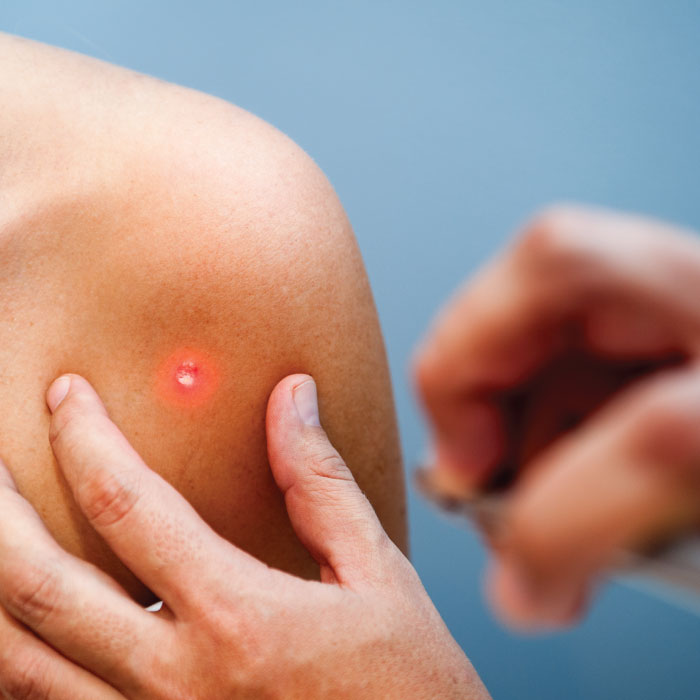
Skin Cancer
Skin cancer, much like any form of cancer, may require surgery to remove the cancerous growth. Your plastic surgeon can surgically remove cancerous and other skin lesions using specialized techniques to preserve your health and your appearance.
Although no surgery is without scars, your plastic surgeon will make every effort to treat your skin cancer without dramatically changing your appearance.
A small or contained lesion may be removed with excision – a simple surgical process to remove the lesion from the skin. Closure is most often performed in conjunction with excision.
removal
Skin cancer can be like an iceberg. What is visible on the skin surface sometimes is only a small portion of the growth.
Beneath the skin, the cancerous cells cover a much larger region and there are no defined borders. In these cases, your plastic surgeon may use frozen sections during the removal of your skin cancer to discover and define the borders of the cancerous area. Frozen sections are small parts of the tissue that are removed and immediately sent to the pathologist. These pieces of tissue are then quickly frozen so that he or she can examine them for cancer cells at the time of removal of the cancer. This helps your plastic surgeon to make sure that all of the cancer has been removed.
Alternatively, your plastic surgeon may recommend a specialized technique called Mohs surgery. This procedure may be performed by your plastic surgeon, or you may be referred to a surgeon that specializes in this procedure.
Mohs surgery is a procedure that is performed through the use of multiple specially prepared frozen sections. The goal is to look for a clear margin – an area where the skin cancer has not spread. If clear margins are found, the resulting wound can be reconstructed. If clear margins are not present, the surgeon will remove more tissue until the entire region has a clear margin.
reconstruction
A skin cancer lesion that is particularly large, is being removed with frozen sections or is likely to cause disfigurement may be reconstructed with a local flap.
Healthy, adjacent tissue is repositioned over the wound. The suture line is positioned to follow the natural creases and curves of the face if possible, to minimize the obviousness of the resulting scar.
Your surgeon may choose to treat your wound with a skin graft instead of a local flap. A skin graft is a thin bit of skin removed from one area of the body and relocated to the wound site.



